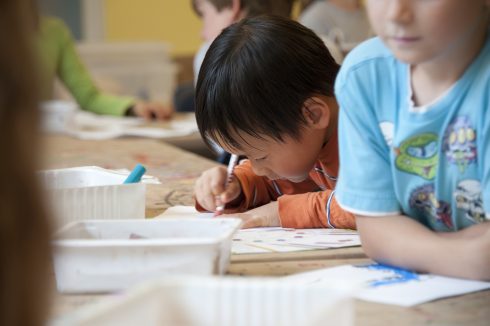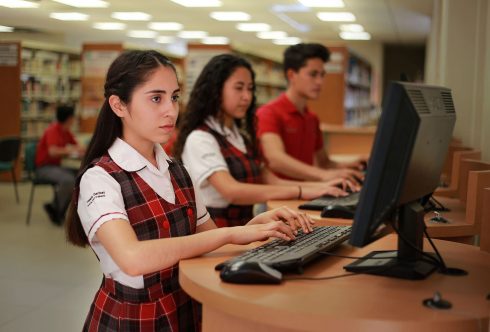PENCIL cases to fill, textbooks to buy, packed lunch boxes to prepare… the first day of school can be as big a deal for parents as it is for their kids. Throw in a pandemic and a labyrinth of COVID restrictions to navigate and the start to this academic year proves more complicated than most.
For new students, those first tentative steps across a schoolyard filled with strangers are one of life’s key rites of passage.
So making sure it’s the right school is a test all parents want to pass with flying colours.
Whether it’s playschool, primary school or secondary school, expat parents in Spain have important choices to make.
Of course, your selection will depend on certain key factors: distance from home, budget, academic standards, teaching style and word-of-mouth recommendations, to name just a few.

So where do you start?
The first item on your checklist should be Public or Private – do you opt for an international college or a Spanish state school?
It’s generally an easier decision to make for younger children, as primary schools throughout Europe are more or less comparable.
Around two-thirds of ex-pats send their children to local state schools – called ‘colegios’ (primary schools) and ‘institutos’ (secondary schools).
There are two serious advantages to Spanish schools.
One – children will learn Spanish fast and should integrate well into their new home country.
Younger children, in general, thrive in state schools with the under-nines normally picking up impressive spoken Spanish (usually, far better than their parents) within a year, just by socialising with their friends.
Two–state schooling is free of charge from the age of three, when children can begin attending ‘infantile’ or ‘pre-escolar’, equivalent to a nursery in the UK. The only costs you’ll have to cover are books, school trips and if the school has them, uniforms.

There are also plenty of downsides to Spanish schools. Older, less extrovert kids with limited Spanish can have trouble adjusting. And learning maths and physics in a foreign idiom is an extra challenge! Also throwing them into Spanish schools if they are over nine can be daunting in the extreme.
It is definitely worth considering extra language tuition outside school hours to help ease the transition.
“It is fine if you get the kids into school early, at a young age, but if they are nine or 10 then they will find it harder,” advised one English parent whose two children have been through the local system in Manilva.
“They will almost certainly need some extra tuition and watching carefully. It also helps if the parents get involved in the school and try to get to know the other Spanish parents. Joining the parents/teachers association certainly helps.”
If you decide against the Spanish state system – either because you fear educational standards are lower (according to reports, Andalucia does indeed come well below average), or because you prefer to have your children educated in English – then you will have no choice but to go private.

Budget is a major consideration but many ex-pat parents say an international school gives a gentler introduction to education in a foreign country, with smaller classes taught in English.
Most international schools even follow a UK curriculum of GCSE and A-levels, with a number of local schools regularly seeing their pupils getting into the top British universities, including Oxbridge.
Most British schools are members of the National Association of British Schools in Spain (NABSS) and are inspected regularly by the group, a set-up similar to the UK’s Ofsted inspections.
A great advantage for many parents is that international schools often have a more multicultural environment than state schools. Most have some 20 different nationalities attending and offer a bilingual study programme.
Paul Kelly, an education consultant in Marbella said: “Pupils meet other students from so many different countries.
“This is such a valuable opportunity as it awakens a curiosity for other cultures, languages, traditions, customs and even food from a very early age.”
To tie in with this, many of the top schools are increasingly offering the International Baccalaureate (IB) programme, as well as the local secondary school qualification, the Bachillerato.
The most obvious downside, of course, is the cost. Schools range from basic to luxurious but, take note, they come at a price.

Fees range from €3,000 a year for primary school to between €6,000 and €17,000 per year for secondary schools.
But there are no rulebooks or easy answers to choosing the right schools in Spain.
It really all depends on which boxes you need ticked, whether that’s affordability, integration or a smoother transition.
Just one final tip for parents who decide to go with the Spanish system: learn the language yourself. How else will you chat to your kids’ teachers on open days?
And, more important for your kids than that, how will you help them with their homework?
READ MORE:
